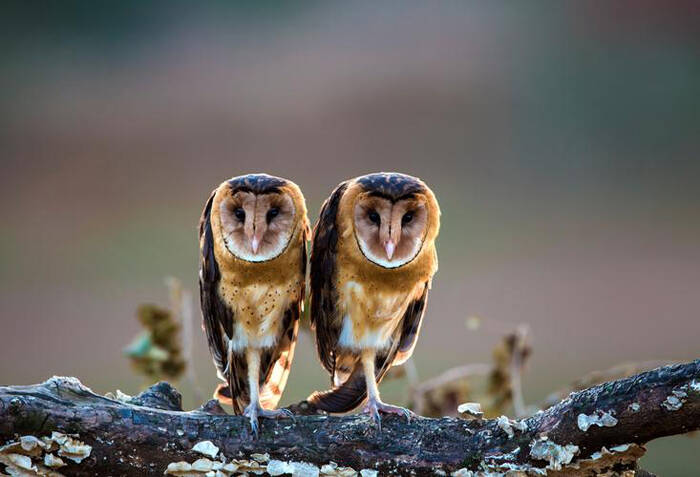Tyto longimembris
IUCN
LCBasic Information
Scientific classification
- name:Tyto longimembris
- Scientific Name:Tyto longimembris,Eastern Grass-owl, Monkey-faced owl, Monkey eagle, White-breasted grass owl
- Outline:Raptor
- Family:Strigiformes Owlidae Owl
Vital signs
- length:About 32 cm
- Weight:About 450g
- lifetime:About 10-15 years
Feature
The face is heart-shaped, similar to a barn owl, but the face and chest are very dark yellow, and the upper body is dark brown.
Distribution and Habitat
The barn owl is distributed in Australia, China, Fiji, India, Indonesia, Myanmar, Nepal, New Caledonia, Papua New Guinea, the Philippines, Japan, and Vietnam.
Extinct in: Bangladesh, Fiji. Migrant bird: Hong Kong, China, Japan.
Anhui (Tunxi), Zhejiang (Wenling), Jiangxi (Taihe, Xiajiang), Hunan, Fujian, Taiwan, Guangdong, Guangxi, Guizhou, and Yunnan, China.
It lives in the grass and shrubs at the foot of the mountain, and often moves in dense tropical grasslands, swamps, especially sugarcane fields beside reed marshes, hiding in the tall grass on the ground. Sometimes it also perches on the fragile branches at the top of young pines.
Appearance
Length: 32 cm, wingspan: 116 cm, weight: 450 g. Upper body: dark brown, with brownish-yellow markings, small white spots near the feather tips. Similar to a barn owl, with a gray-brown, heart-shaped face with dark chestnut edges. Flight feathers: yellowish-brown, with dark brown horizontal stripes; tail feathers: light yellow chestnut, with four dark brown horizontal stripes; lower body: light brownish-white, with brown spots. Bill: yellowish-brown. Claws: dark brown. Iris: brown; bill: beige; feet: slightly white.
Details
The Eastern Grass-owl is a medium-sized bird of prey with 6 subspecies.

If conditions are favorable, the grass owl can breed at any time of the year. However, in the northern coastal areas of Australia, it usually chooses to lay eggs between March and June. The nest is placed on the ground, hidden in dense grass or reeds, and 3 to 8 eggs are laid in each nest, which are milky white. The size of the egg is about 40 mm × 30 mm, and the incubation time is about 42 days, which is roughly the same as the incubation time of the African owl. The chicks have white down that turns golden yellow before turning into adult feathers. The chicks leave the nest to fend for themselves after two months, and the mother continues to feed them. The chicks wander among the tall grass, and at night they return to the nest to get food. When they finally leave the nest, they will change into slightly darker feathers that cannot be distinguished from adult females.
On February 23, 2020, police officers from the Liuheng Public Security Bureau in Putuo District, Zhoushan City, Zhejiang Province, promptly rescued a grass owl.
Listed in the CITES Endangered Level of the Washington Convention: Appendix II Effective Year: 1997
Listed in the IUCN Red List of Threatened Species in 2016 ver3.1-Least Concern (LC).
Listed in the China National Key Protected Wildlife List (2021) Level II.
Protect wildlife and eliminate game.
Maintaining ecological balance is everyone's responsibility!








